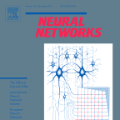Seismic processing plays a crucial role in transforming raw data into high-quality subsurface images, pivotal for various geoscience applications. Despite its importance, traditional seismic processing techniques face challenges such as noisy and damaged data and the reliance on manual, time-consuming workflows. The emergence of deep learning approaches has introduced effective and user-friendly alternatives, yet many of these deep learning approaches rely on synthetic datasets and specialized neural networks. Recently, foundation models have gained traction in the seismic domain, due to their success in natural imaging. This paper investigates the application of foundation models in seismic processing on the tasks: demultiple, interpolation, and denoising. It evaluates the impact of different model characteristics, such as pre-training technique and neural network architecture, on performance and efficiency. Rather than proposing a single seismic foundation model, this paper critically examines various natural image foundation models and suggest some promising candidates for future exploration.
翻译:暂无翻译

























